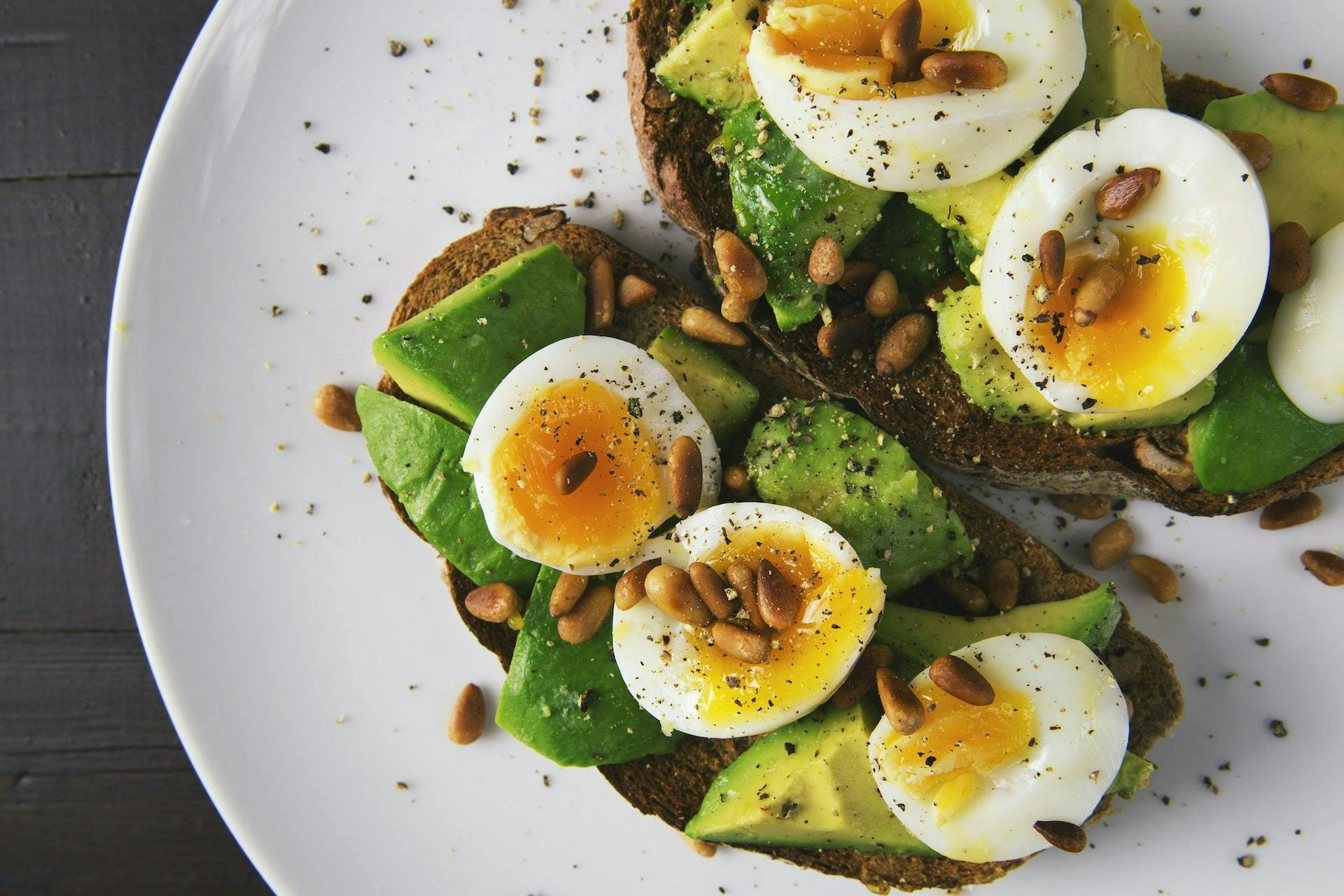Glucose and glycogen play different, yet complementary, roles in your body's energy management. Just like a hybrid car uses gasoline and a battery, our body uses glucose and glycogen to fuel various activities and metabolic processes.
Understanding how glucose and glycogen work together to fuel your body can help you make informed decisions about fasting, workout routines, and meal timing, enhancing your overall metabolic health.
What’s the difference between glucose and glycogen?
While glucose and glycogen are chemically similar, they serve distinct roles in providing your body with energy. Glucose is a simple sugar and the primary energy source for your body's cells. It's always present in your bloodstream, ready to be used for immediate energy needs. Glycogen, on the other hand, is the stored form of glucose – it is a complex carbohydrate that is primarily stored in the liver and muscles [1]. It serves as a backup energy reserve and is tapped into when available glucose levels start to decline.
When does your body use glucose vs. glycogen?
Both glucose and glycogen are essential forms of energy, but they play different roles depending on your body's needs and the activities you engage in. Glucose is readily available in your bloodstream, especially after you eat. Glycogen, on the other hand, acts as a reserve fuel to be used when glucose levels are low, such as during fasting or with high-intensity or prolonged physical activity [2]. During these instances of low glucose availability, glycogen is released from its stores and converted to glucose that is sent to your bloodstream.
While you’re fasting
Whether from an overnight fast during sleeping or during practices like time-restricted eating (TRE), fasting triggers a metabolic switch from one type of fuel to another. Initially, your body depends on glucose circulating in your bloodstream for energy – this glucose primarily comes from your last meal. However, as fasting continues and this glucose is used up, your body turns to its stored form of energy – glycogen [3].
Glycogen, mainly from stores in your liver, is then broken down into glucose and released in your bloodstream to maintain blood sugar levels and supply your body with energy. This process is critical for maintaining energy homeostasis, ensuring your organs have a steady energy supply during prolonged periods without food intake.
During a fasted workout
Engaging in exercise when in a fasted state, like before you eat breakfast, presents a slightly different scenario for energy use. Initially, during a fasted workout, your body uses the remaining circulating glucose as its main energy source. As the workout progresses, your body will gradually shift to utilizing glycogen as a sustained energy source – first from your liver stores, then mainly from muscle stores – allowing for continued physical activity [2]. From here, especially if it's of moderate to high-intensity exercise or physical activity for a prolonged period, your body will transition to using its fat stores for energy [4].
It’s important to note that the rate at which these shifts in energy usage occur can vary greatly from person to person, influenced by factors like overall fitness, the intensity of the exercise, and the individual's metabolic flexibility.
Why does this matter for metabolic health?
When there are issues with metabolic health, your body’s ability to build up and break down glycogen and effectively use glucose can be impaired.
With insulin resistance, your storage capacity for glycogen becomes maxed out. Instead of excess glucose being stored as glycogen in your liver and muscles, glucose gets converted and stored as metabolically unhealthy visceral fat. Carbohydrate intolerance – a kind of temporary insulin resistance – can also lead to issues with processing glucose and glycogen, especially after the keto diet.
If you’re on the path to losing weight and go on a low-carb diet, such as keto, you may notice a quick drop in weight initially. While this can be motivating, you’re actually losing water weight. When stored, each gram of glycogen is bound to about 3g of water [5]. As you use up your glycogen stores, water is released with it. However, when eating a low-carb diet, you don’t replenish your glycogen stores or the water bound to it, resulting in a loss of water weight. Your body switches to using fat instead of glucose and glycogen, which can help you lose weight but can also lead to carbohydrate intolerance.
The ability to rely on and efficiently switch between glucose and glycogen during activity is a hallmark of good metabolic health and is essential for maintaining energy levels.
- Fasting and fasted workouts can be effective tools for weight loss and improving metabolic health [3]. When using a CGM, you may even notice a glucose spike during a HIIT workout as your body releases glycogen.
- Resistance training not only helps with weight loss but can combat insulin resistance and increase muscle mass – effectively allowing for more glycogen storage capacity.
- Post-workout meal timing and carb intake post-workout are essential for replenishing glycogen stores and ensuring glucose is available for your next activity.
Key takeaways
- Glucose provides immediate energy, particularly during high-intensity activities and immediately after eating, while glycogen serves as a vital long-term energy reserve during fasting or prolonged exercises.
- Your body gradually shifts from utilizing circulating glucose to stored glycogen to accommodate for fasting and physical activity, providing you with sustained energy levels. Once glycogen starts to deplete, your body will switch to using fat stores for energy.
- Your metabolic health is closely tied to how effectively your body uses glucose and glycogen. Meal timing and physical activity are two ways to tailor your habits to maximize your metabolic health.
References:
- https://www.ncbi.nlm.nih.gov/pmc/articles/PMC7797522/
- https://www.sciencedirect.com/science/article/pii/S2214647416300010
- https://www.ncbi.nlm.nih.gov/pmc/articles/PMC3946160/
- https://nutritionandmetabolism.biomedcentral.com/articles/10.1186/s12986-015-0055-9
- https://www.ncbi.nlm.nih.gov/pmc/articles/PMC6019055/


